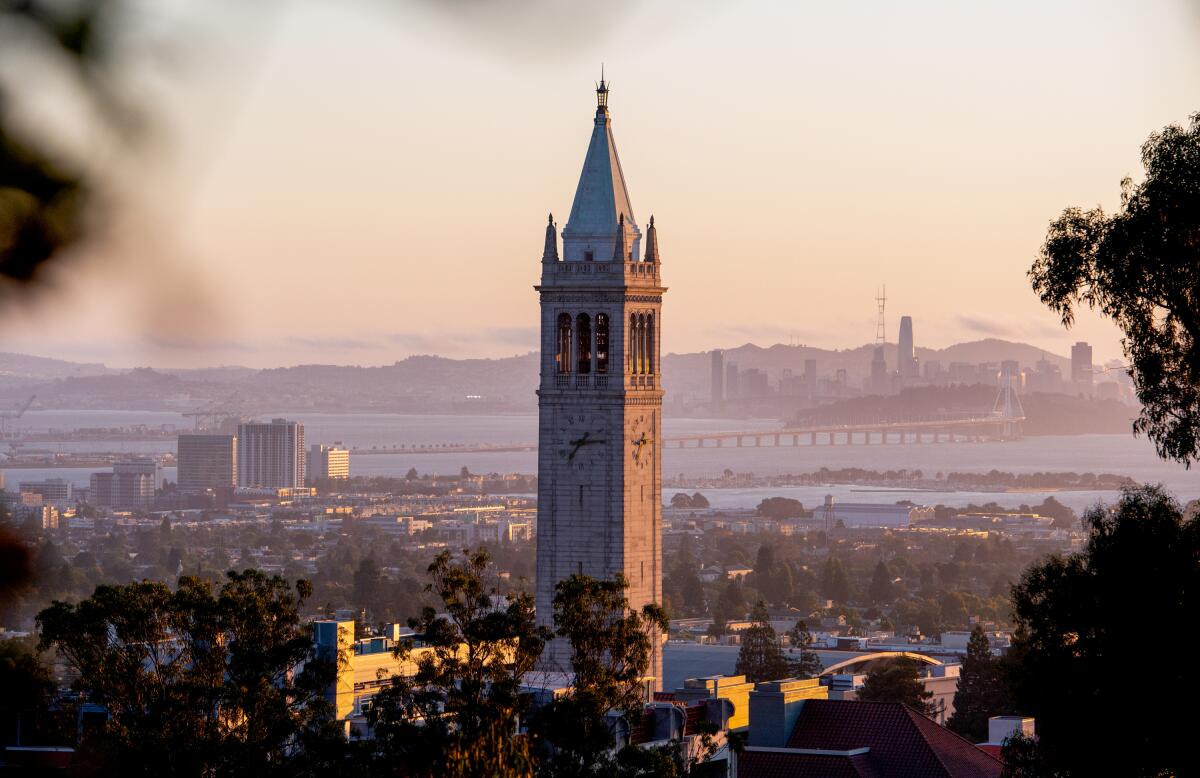The struggle for the soul of UC

- Share via
The conundrums of the University of California are perpetual. Should the education there be more state-funded or tuition-funded? Should the school be more an elite research institution or a vehicle for graduating young people as efficiently as possible? Should it mimic private universities by importing foreign and out-of-state students who bring different perspectives and experiences to the campus — and, don’t forget, a lot of cash — or should those coveted slots be reserved for Californians?
These issues are fought on a semi-regular basis but not resolved, as illustrated by the epic conflicts between UC President Janet Napolitano and Gov. Jerry Brown during their time in office. There might be some movement in one direction or another, but the essential struggle for the soul of UC continues.
Now it’s on again as state senators call for requiring UC to cut the share of undergraduates who aren’t state residents by almost half, to 10%. Close to 150,000 of the state’s high school seniors were unable to nab a freshman spot at any UC school, with rejections especially pronounced at UC Berkeley and UCLA, which have a lot of cachet with students around the globe. Those schools have higher percentages of out-of-state students as well.
The university argues that it needs the geographical diversity that out-of-state students bring, but that rings hollow. Although it’s nice to have different perspectives and experiences among students, no one was complaining in 2007 when only 5% of undergrads were from outside California.
Out-of-state enrollment is a cash cow because those students pay full freight, and much of the money — hundreds of millions of dollars a year — funds financial aid for needy California students. Is the state really ready to use tax dollars every year to make up for the loss of that revenue? Even when federal dollars aren’t flowing and state coffers are looking bare, those lower-income students will need an education, and if the university doesn’t have the revenue from the state or non-California undergrads, it will end up raising in-state tuition, which is just as unfair to residents.
Reducing the number of out-of-state students would allow an additional 4,600 in-state freshmen a year to be admitted; close to 30 times that many California applicants were turned away this year. UC suggests that the state simply fund more California students in addition to the out-of-state students it admits, but its campuses already are overcrowded.
What the state needs is a buildup of UC capacity. Opening a whole new campus, as the state did with UC Merced in 2005, would be costly and take years. But why not consider converting an existing California State University campus to a UC and preparing community colleges to offer some bachelor’s degrees, which would be an inexpensive way to get a four-year degree and take enrollment pressure off Cal State?
That would be a much better recourse than these nearly annual tussles to define and redefine the mission of the University of California.
More to Read
A cure for the common opinion
Get thought-provoking perspectives with our weekly newsletter.
You may occasionally receive promotional content from the Los Angeles Times.









